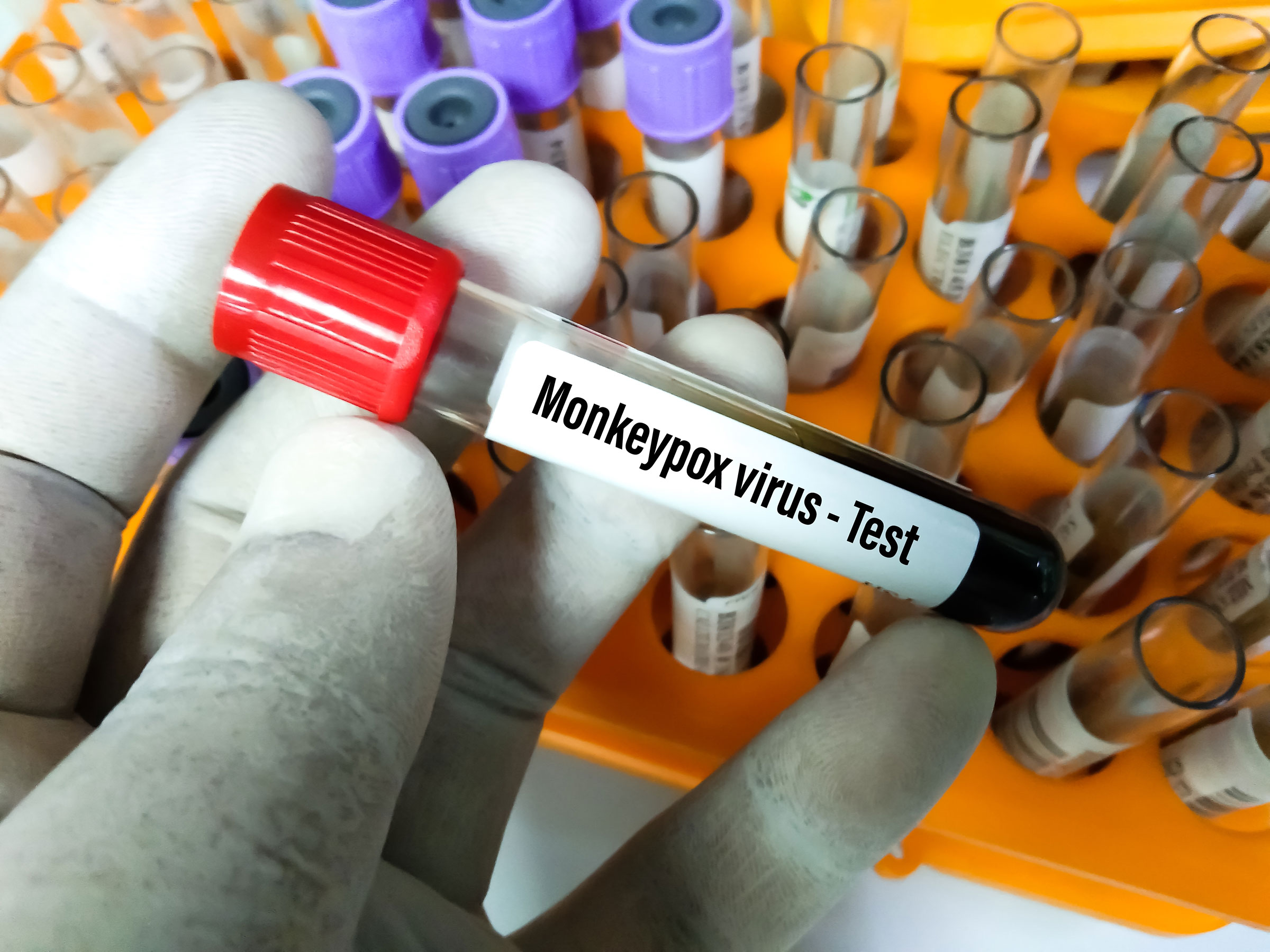Med Device Department: Applying COVID Lessons to Monkeypox

Learning from COVID-19, pharma is already launching tests and vaccines for the outbreak of monkeypox that has spread from Europe to the U.S. Roche has released three types of monkeypox diagnostic tests available for research use worldwide. All are PCR tests that need to be run on the company’s own PCR analyzer. The first test screens for all orthopoxvirus strains, including smallpox, cowpox, and horsepox as well as monkeypox, while the second looks for monkeypox specifically, detecting both the West African and Central African clades of the virus. The third tests for all orthopoxviruses and can differentiate between the two monkeypox strains.
While existing vaccines can prevent monkeypox effectively, there are 200 cases in regions where the disease is not endemic, accompanied by many hospitalizations, making accurate testing important. Meanwhile, Moderna is using its vaccine platform to develop a new vaccine for monkeypox that is currently in pre-clinical study. It remains to be seen if these potential products will be more effective against monkeypox than the two FDA-approved smallpox vaccines already on the market from Sanofi and Bavarian Nordic. While monkeypox is not likely to become an epidemic and does not spread as easily as COVID-19, officials warn it is important to be wary of symptoms and keep an eye on outbreaks.
Therapeutic Talk: High Blood Pressure and the Microbiome
Considering how important we’ve learned the gut microbiome to be in recent years, it should be no surprise that it plays a role in high blood pressure, but it may not be so obvious that it also has a significant impact on blood pressure drugs. Hypertension, or high blood pressure, often goes undiagnosed and leads to strokes and heart attacks, two leading causes of death in the U.S. While many people don’t know they have high blood pressure, there are 20% who do know, but have resistant hypertension and cannot get the condition under control even with aggressive medication regimens.
Without knowing the cause of resistant hypertension, there is not much to do besides switch medications to hope for change. However, the University of Toledo College of Medicine and Life Sciences has examined the link between an individual’s blood pressure readings and the unique collection of bacteria that lives in their gut, and has shown that this bacteria can reduce the effectiveness of certain blood pressure drugs. The research team compared the effectiveness of the antihypertensive drug quinapril in rats with normal gut bacteria against those whose gut microbiota had been depleted by high doses of antibiotics. Those given antibiotics first responded much better to quinapril. Gut bacteria Coprococcus was identified as the culprit.
Though long-term use of antibiotics isn’t a realistic strategy for addressing resistant hypertension, it might be possible to alter microbiota without dangerous effects using probiotics and prebiotics. Human studies will need to find methods that are effective in reducing Coprococcus’ effects and any other common bacteria that may also impact hypertension drug efficacy.
Discoveries/Innovations: The Human Genome Finally Complete

Two decades after The Human Genome Project began, scientists have finally pieced together the human DNA sequence in its entirety. Perhaps the biggest implications of the historic feat lie in human healthcare. The gapless sequence of base pairs is integral to understanding our genetic variation and the genomic factors in certain diseases. This doesn’t only include diseases attributed to genetic mutation, such as Down Syndrome or Sickle Cell Anemia, but those disorders that may have inherited factors, such as back pain, cancer, infertility, depression, and countless other healthcare concerns. Besides better understanding genetic contribution to certain diseases, this step is crucial for using the genome sequence as a routine part of clinical care, a trend that has been on the rise in recent years.
The combined work of thousands of researchers in the Telomere to Telomere (T2T) consortium, all with improving lab tools and differing approaches, allowed for the completion of the last 8% of the human genome, most of which was unclear along the telomeres (long ends of the chromosome) and centromere (dense inner portion of the chromosome). Indeed, centromeres play essential roles in cell division and therefore affect fertility, while conditions such as cancer and Down Syndrome have also been connected to these areas of the chromosome in unclear ways.
“Ever since we had the first draft human genome sequence, determining the exact sequence of complex genomic regions has been challenging,” said Evan Eichler, PhD, researcher at the University of Washington School of Medicine and T2T consortium co-chair. “I am thrilled that we got the job done. The complete blueprint is going to revolutionize the way we think about human genomic variation, disease, and evolution.”
FDA Update
Drug Approvals
The first treatment for eosinophilic esophagitis (EoE) in adults and patients over 12 has been approved by the FDA. Regeneron Pharmaceuticals’ Dupixent (dupilumab), originally approved in 2017 for atopic dermatitis, is an injectable monoclonal antibody that acts to inhibit part of the inflammatory pathway. This stymies EoE, an inflammatory disorder during which eosinophils, a type of white blood cell, are found in the tissue of the esophagus, making it difficult to swallow or eat easily.
Eli Lilly’s Mounjaro (tirzepatide) was approved to improve blood sugar control in adults with type 2 diabetes, as an addition to diet and exercise. Mounjaro is administered by injection under the skin once weekly, with the dose adjusted as tolerated to meet blood sugar goals. It will be available in six doses (2.5 mg, 5 mg, 7.5 mg, 10 mg, 12.5 mg, 15 mg) and will come in Lilly’s auto-injector pen with a pre-attached, hidden needle that patients do not need to handle or see.
The FDA expanded the approval of Gilead Sciences’ COVID-19 treatment Veklury (remdesivir) to include pediatric patients 28 days of age and older weighing at least 3 kilograms (about 7 pounds) with positive results of direct SARS-CoV-2 viral testing, who are: hospitalized or not hospitalized and have mild-to-moderate COVID-19 and are at high risk for progression to severe COVID-19, including hospitalization or death.
Med Device Approvals
The FDA has approved ClearPoint Neuro’s next-generation SmartFrame Array Neuro Navigation System and Software, version 1.1. The Array system is used in both MRI suites and operating rooms as a surgical device that streamlines laser catheter insertion, biopsy, and drug delivery clinical trial procedures all for the brain. The newest version boasts a pre-planning workflow that reduces procedure time. During the SmartFrame Array’s limited release, it was used in over 50 pre-clinical, clinical trial, and clinical procedures across the U.S.
The FDA has approved the first non-drug treatment for fibromyalgia: a wearable neuromodulation system from NeuroMetrix called the Quell. The sleeve is worn on the upper calf where electrodes stimulate nerves in the leg to trigger a pain relief response that may ease symptoms of fibromyalgia. In clinical studies, 60% of patients felt significant improvement after three months of treatment. While the device can be controlled from an app, Quell automatically manages therapy intensity based on the time of day, the wearer’s body position and sleep patterns, the possibility of desensitization over time, and even changes in the weather. The rechargeable system is sold on the NeuroMetrix site for $300 with replaceable electrode packs for $80.







